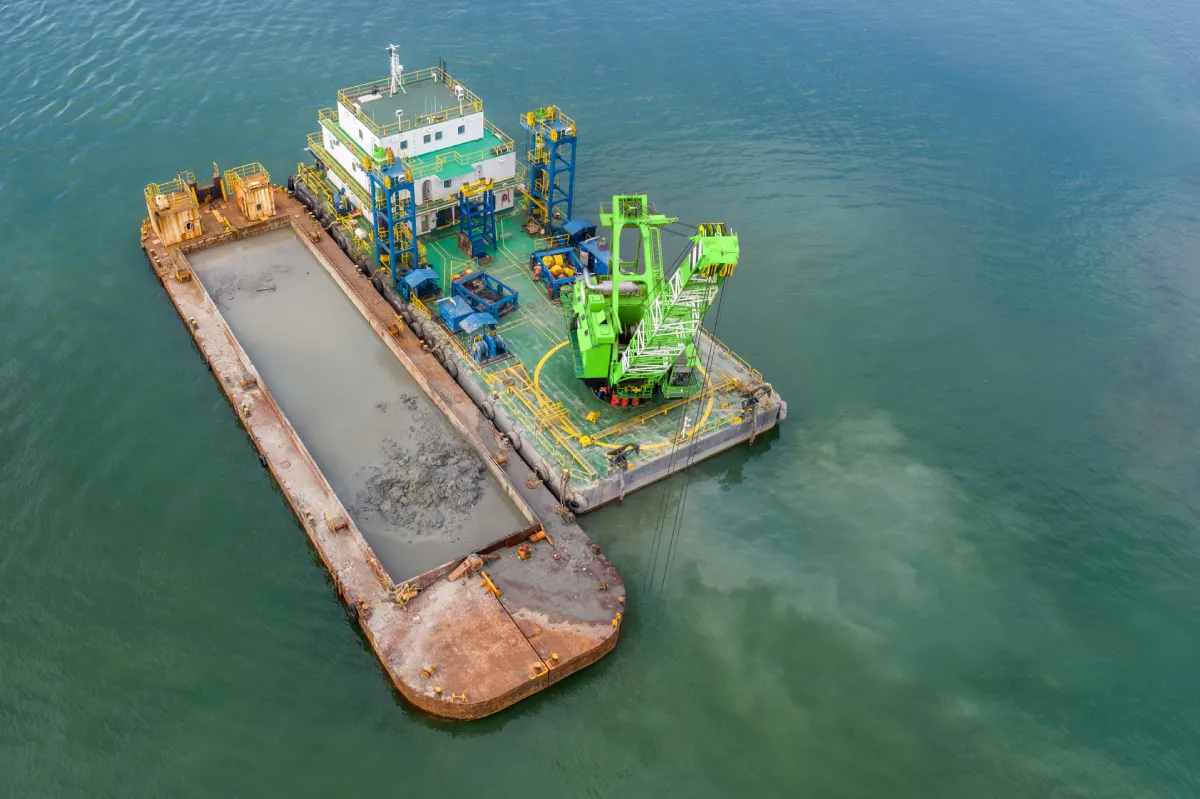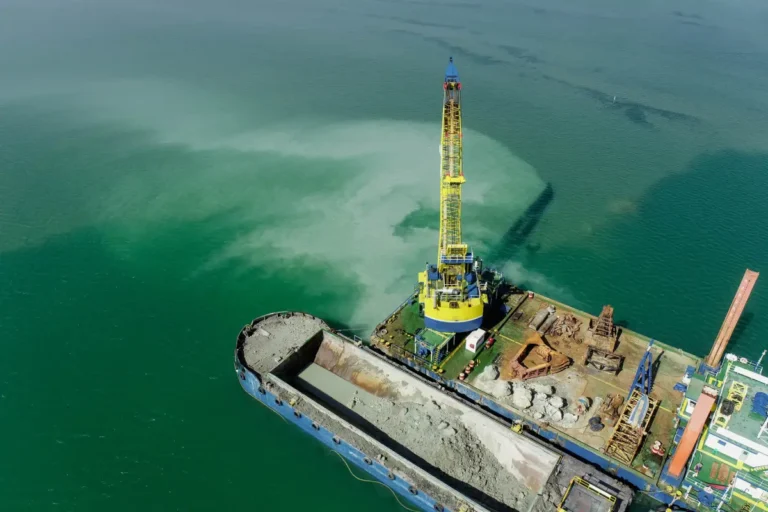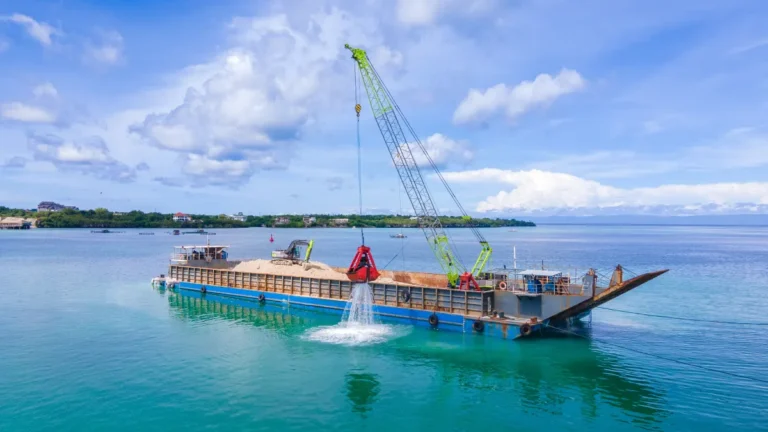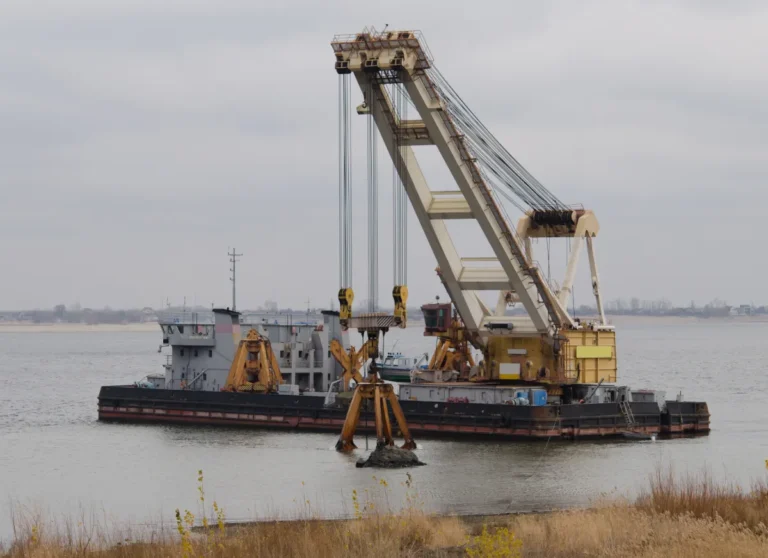Dredge manufacturing services are the backbone of successful large-scale industrial projects, powering operations across ports, mining sites, marine construction zones, and environmental restoration efforts. These services go beyond simply building equipment—they combine engineering innovation, precision fabrication, system integration, and ongoing support to ensure dredges perform in some of the harshest working conditions on earth. Whether it’s designing custom pumps for abrasive slurries or developing fully automated dredging platforms, leading manufacturers play a crucial role in enabling efficient, safe, and sustainable dredging operations worldwide.
What Are Dredge Manufacturing Services?
Dredge manufacturing services go far beyond the simple fabrication of machinery. They represent a complete ecosystem of engineering, design, production, testing, and support processes that enable reliable and efficient dredging operations. A professional dredging manufacturer ensures that every component—from the pump to the control system—is purpose-built for durability, performance, and long-term operation in demanding industrial conditions.
At their core, dredge manufacturing services include a wide range of technical and operational capabilities such as:
- Engineering and Design – 3D CAD modeling, hydrodynamic analysis, and material selection tailored to abrasive and corrosive dredging environments.
- Prototyping and Product Development – Custom designs for pumps, cutterheads, pontoons, or hydraulic systems, tested and refined for optimal flow and solids handling.
- System Integration – Synchronizing hydraulic power units, electric drives, GPS systems, PLC-based automation, and remote monitoring for cohesive operation.
- Manufacturing and Fabrication – Heavy-duty machining, welding, and assembly of dredge pumps, pontoons, and structural frames designed to handle extreme loads.
- Testing and Quality Assurance – Rigorous performance testing, vibration and fatigue analysis, and compliance with ISO and marine-class standards to guarantee reliability.
- Lifecycle Maintenance and Support – Refurbishments, spare parts supply, field service, and data-driven performance tracking to ensure maximum uptime and efficiency.
Dredging Equipment Manufacturer vs Full-Service Dredge Manufacturer
Not every manufacturer offers the same depth of expertise or support. A dredging equipment manufacturer focuses primarily on hardware—building pumps, cutterheads, or barges to specification. Their role usually ends once the equipment is delivered.
In contrast, a full-service dredging manufacturer provides end-to-end support, including design consultation, fabrication, automation, testing, on-site commissioning, operator training, and long-term service. This approach ensures that the dredging system functions as an integrated unit rather than a collection of parts, minimizing downtime and maximizing production efficiency.
A full-service partner helps clients adapt equipment for diverse challenges—ranging from abrasive mining slurries and contaminated sediments to deep-water port maintenance—while ensuring compliance, efficiency, and sustained performance. This comprehensive collaboration sets the stage for discussing how customized equipment design transforms industrial dredging outcomes.
Custom-Built vs. Standard Equipment: Tailoring Machines to Complex Environments
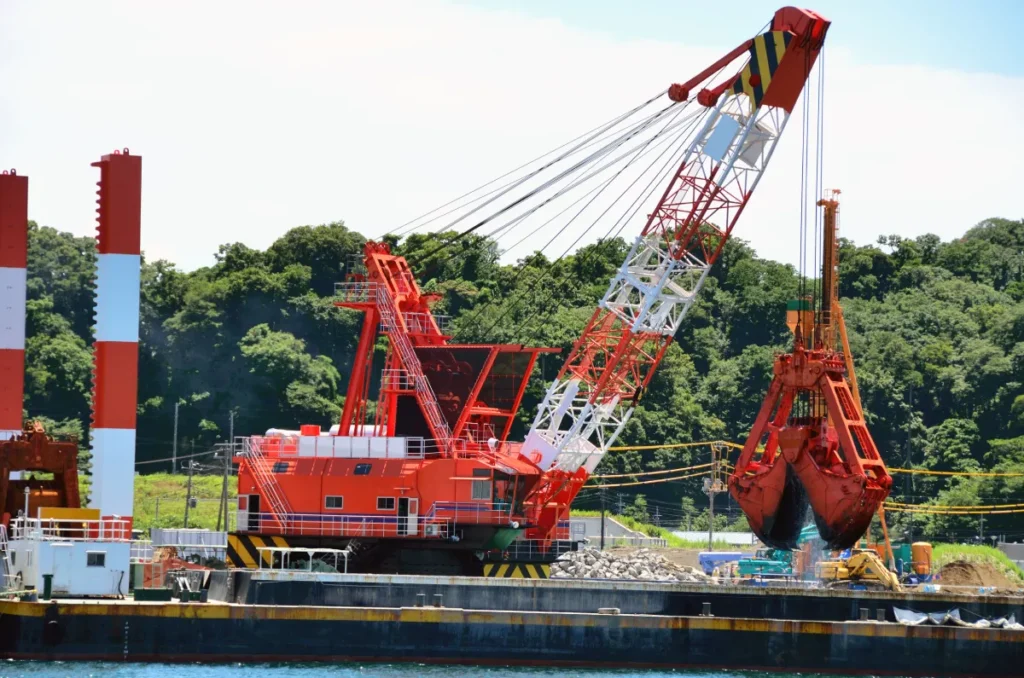
In industrial dredging, one size rarely fits all. While standard dredging equipment offers a quicker and more economical solution, large-scale and high-risk projects often demand custom-built systems engineered to withstand unique operating conditions. Dredge manufacturing services bridge this gap by designing, modifying, and optimizing machines that match site-specific requirements, sediment profiles, regulatory standards, and production targets.
How Manufacturers Customize Dredging Equipment
Manufacturers tailor different components of a dredging system to maximize efficiency, durability, and safety in challenging environments:
- Dredge Pumps
- Customized impeller design for higher solids content or low-turbulence flow.
- Use of wear-resistant alloys or high-chrome materials for abrasive mining slurries.
- Variable-speed drives to optimize flow in fluctuating sediment conditions.
- Cutterheads and Suction Attachments
- Adjustable tooth configurations for compact clay, rock, or silt.
- Water jet integration for improved soil loosening in environmental dredging.
- Reinforced housings to handle high-pressure deep-water operations.
- Barges and Hull Structures
- Modular pontoons for transport in remote locations or shallow water deployment.
- Increased hopper capacity for long-distance disposal operations.
- Ballasting systems to maintain stability in deep-sea dredging.
- Pipelines and Hose Systems
- High-abrasion-resistant inner linings for mining tailings and sand-heavy slurry.
- Floating, submerged, or land-based pipelines are adapted to site constraints.
- Anti-corrosion coatings for marine or brackish water environments.
Where Customization Becomes Essential
Some industrial applications make it nearly impossible to rely only on catalogue-standard equipment. Common scenarios include:
- Abrasive Mining Slurry – Requires hardened pump casings, high-chrome impellers, and thicker pipeline walls to withstand constant wear from sharp mineral particles.
- Deep-Water Port Dredging – Demands high-pressure pumps, reinforced suction pipes, extended ladder systems, and advanced positioning technology.
- Environmental Dredging Projects – Focus on low-turbulence pumping, turbidity control, sealed cutterheads, and precise sediment removal to avoid contaminant spread.
While standard dredging equipment can serve general-purpose needs, custom-engineered solutions are the definitive choice when production demands, sediment types, or regulatory standards exceed conventional limits. In the next section, we explore how engineering and design turn these customization concepts into fully functional dredging systems.
Engineering and Design: From Concept to Functional Dredging Systems
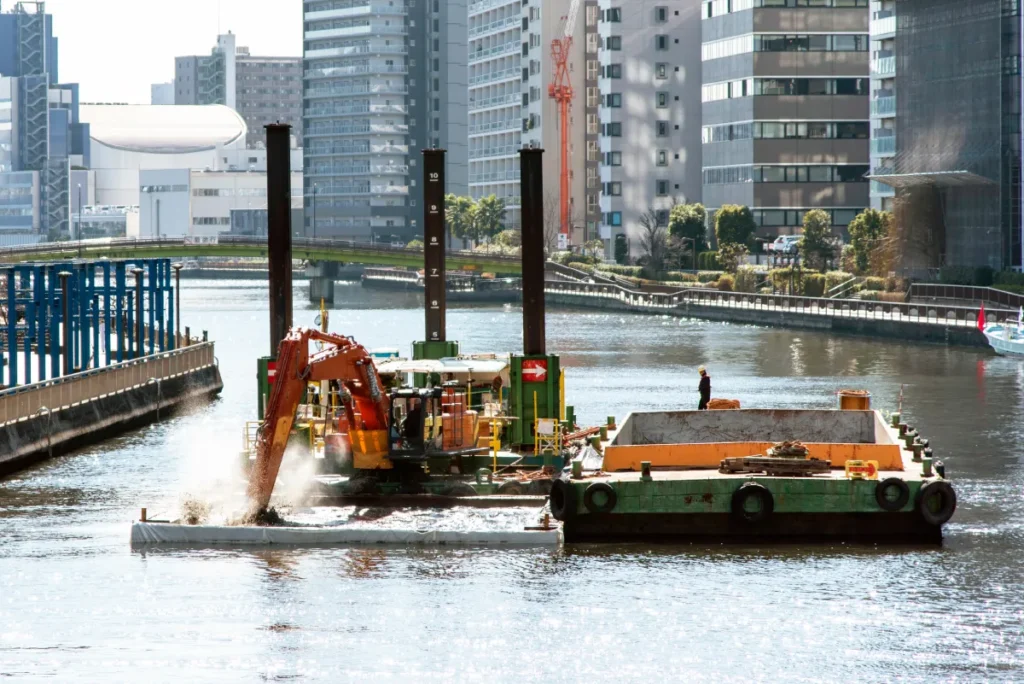
Engineering and design form the foundation of reliable dredge manufacturing services. Before any steel is cut or components are assembled, dredging equipment is meticulously engineered to perform in varying site conditions—whether it’s high-sediment rivers, offshore environments, or corrosive industrial ponds. This is where ideas transition into precise, functional systems capable of delivering consistent performance with minimal downtime.
Core Engineering Processes Behind Dredge Manufacturing
To ensure optimal functionality, manufacturers follow a structured engineering process that includes:
- CAD Modeling and System Design
- 3D CAD models provide a digital prototype of the dredge system, including pumps, suction ladders, pontoons, hydraulic components, and discharge lines.
- This helps engineers identify fitment issues, optimize component layout, and streamline fabrication before production begins.
- Hydrodynamic and Flow Simulations
- Computational Fluid Dynamics (CFD) is used to predict pump performance, slurry flow behavior, and sediment transport efficiency.
- Simulations also help reduce cavitation, turbulence, and energy loss, ultimately improving production output and fuel efficiency.
- Material Selection and Wear Analysis
- High-chrome alloys, duplex stainless steel, or polymer linings are chosen based on abrasion, corrosion, and sediment composition.
- Finite element analysis (FEA) is used to test material stress, deformation, and fatigue in components like pump casings, impellers, and structural beams.
- Structural Stress and Load Calculations
- Engineers calculate static and dynamic loads on pontoons, cranes, cutter ladders, and frames—especially in heavy seas or fast-flowing rivers.
- Reinforcements are designed to prevent structural failure and extend the service life of the equipment.
System Integration for Operational Efficiency
A dredging system is only as strong as its integration. Engineering teams synchronize mechanical, electrical, hydraulic, and digital elements to ensure smooth and safe operations.
- Hydraulic and Electrical System Integration
- Power units are matched to pump requirements for optimal torque and flow rate.
- Electrical panels, sensors, and motor control centers (MCCs) are integrated with hydraulic systems for precise control.
- Automation and Remote Monitoring
- PLC and SCADA systems enable real-time monitoring of pump speed, slurry density, fuel consumption, and dredge position.
- GPS, sonar, and RTK positioning systems allow operators to maintain accurate dredging depth and alignment.
- Safety, Compliance, and Human-Centered Design
- Engineers incorporate emergency shut-offs, overload protection, and ergonomic control panels.
- Designs need to meet international standards such as ISO, CE, ABS, and marine classification requirements.
This engineering-first approach ensures that dredging equipment is not only powerful but also efficient, compliant, and tailored to project-specific requirements. Up next, we explore how these engineered designs transition into large-scale fabrication and assembly.
Fabrication and Assembly: Precision Manufacturing at Scale
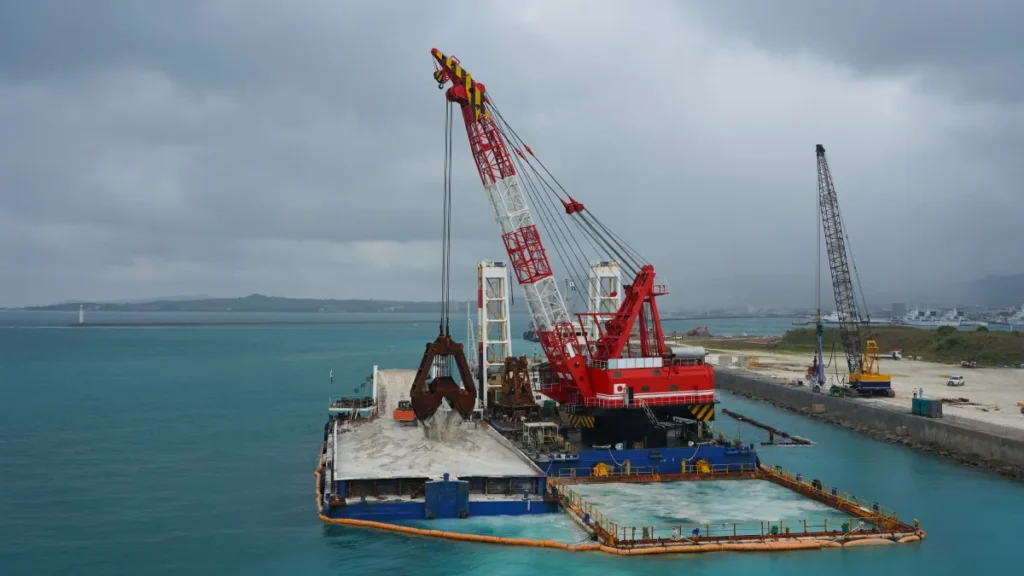
Once engineering and design are finalized, the focus shifts to fabrication and assembly—where digital models are transformed into fully operational dredging systems. This stage demands precision, consistency, and robust quality control, as even minor imperfections can affect pump performance, structural integrity, or safety in the field.
Core Manufacturing Processes in Dredge Production
Dredge manufacturing combines heavy industrial fabrication with advanced machining technologies to produce equipment that withstands high pressure, abrasive slurries, and continuous operation.
- Machining and Casting
- Pump bodies, impellers, and volutes are cast using high-strength alloys or high-chrome materials.
- CNC machining ensures exact tolerances for impellers, shafts, and sealing surfaces to maintain hydraulic efficiency and extended wear life.
- Heavy-Duty Welding and Steel Fabrication
- Dredge frames, pontoons, ladders, and cutterhead housings are fabricated using MIG, TIG, or submerged arc welding to handle heavy loads and vibrations.
- Structural components undergo stress relief processes to reduce deformation and increase durability under continuous dredging pressure.
- Assembly of Mechanical and Hydraulic Components
- Pumps, gearboxes, hydraulic motors, and piping systems are pre-assembled to streamline installation at the worksite.
- Alignment tools and precision jigs are used to ensure pump shafts, bearings, and couplings are installed correctly.
In-House vs Outsourced Manufacturing
Not all dredging equipment manufacturers follow the same production model. Their approach often defines the quality, lead time, and customization capabilities.
- In-House Manufacturing
- Enables better control over quality, consistency, and project timelines.
- Ideal for highly customized dredges, prototype development, or projects requiring strict tolerances.
- Welding, machining, electrical assembly, and hydraulic system integration are carried out under a single quality system.
- Outsourced or Hybrid Production Models
- Some manufacturers outsource casting, machining, or component fabrication to external vendors to reduce costs or increase production capacity.
- Final assembly, testing, and hydraulic/electrical integration are often completed in-house to ensure performance compliance.
Quality and Traceability
Whether fully in-house or hybrid, every component must pass strict quality checks. Material certifications, weld inspections, dimensional checks, and performance tests ensure that each system meets client specifications and international standards.
With fabrication complete, the next critical step involves rigorous testing to validate performance before the dredge is shipped to the field or deployed on-site.
Testing and Quality Assurance: Ensuring Reliability in Harsh Conditions
Before any dredging system reaches the job site, it must undergo extensive testing and validation to ensure it can withstand the demanding environments of mining pits, marine ports, tailing ponds, and riverine systems. The goal of testing and quality assurance is to eliminate failures, extend equipment lifespan, and ensure safety and compliance with global standards.
Types of Testing in Dredge Manufacturing
Manufacturers follow multiple stages of testing to verify mechanical performance, durability, and safety:
- Bench Testing of Pumps and Components
- Pumps are tested for flow rate, discharge pressure, efficiency curves, cavitation levels, and power consumption.
- Impeller balance, shaft alignment, and sealing systems are validated before full-scale assembly.
- Endurance and Performance Testing
- Simulated slurry or water-testing facilities are used to run pumps and hydraulic systems over extended hours.
- This helps detect overheating, vibrations, energy losses, or hydraulic inefficiencies under continuous operation.
- Material and Fatigue Evaluation
- Wear plates, impellers, and pump casings are inspected for abrasion resistance and corrosion under high-solids environments.
- Structural stress tests using finite element analysis (FEA) and strain gauges help assess fatigue life in hulls, ladders, and frame structures.
Compliance with International Standards
To ensure equipment is safe, durable, and globally acceptable for industrial use, dredging manufacturers must meet key regulatory standards:
- ISO (International Organization for Standardization) – Quality management (ISO 9001), environmental management (ISO 14001), and occupational safety (ISO 45001).
- ASTM Standards – Material testing, surface hardness, weld integrity, and corrosion resistance.
- Marine Safety Certifications – ABS, Bureau Veritas, DNV-GL certifications for offshore and marine applications.
- Environmental Compliance – Ensuring low turbidity discharge, fuel efficiency, and noise reduction in eco-sensitive dredging operations.
Factory Acceptance Testing (FAT) and Documentation
Before dispatch, complete systems undergo Factory Acceptance Tests (FAT), where pumps, power units, electronics, and control systems are run together:
- Operational functions are verified in real-time conditions.
- Control panels, sensors, and automation systems are tested for responsiveness and accuracy.
- Final documentation includes inspection reports, certificates, test logs, and operation manuals.
A well-tested dredging system not only reduces operational risk but also lowers downtime and maintenance costs once deployed. With quality validated, the next phase is on-site deployment, training, and commissioning to prepare the system for full-scale operations.
On-Site Deployment, Training, and Commissioning
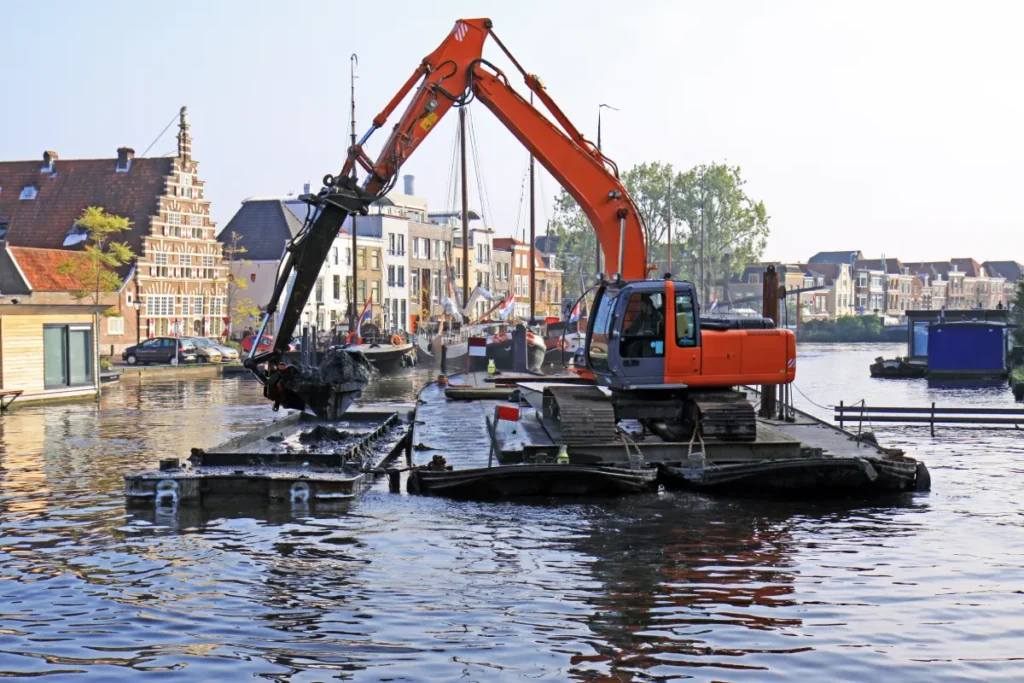
Once fabrication and testing are complete, the equipment moves to the field for installation and commissioning. This phase is critical, as even the most well-designed dredge can underperform if it is not deployed correctly or operated efficiently. Full-service dredging manufacturers don’t just deliver the equipment—they actively support site setup, alignment with production goals, and operator competency.
Deployment and Installation Support
Manufacturers send technical teams to the project site to ensure proper assembly and integration of the dredging system with supporting infrastructure. This includes:
- Positioning and assembling floating pontoons, pump modules, power units, discharge pipelines, and suction systems.
- Calibrating hydraulic, electrical, and control systems to match the design specifications.
- Integrating auxiliary systems such as booster pumps, fuel storage, spud systems, winches, GPS/RTK navigation, and slurry monitoring sensors.
Proper deployment also takes into account site-specific conditions such as sediment concentration, water depth, current velocity, access routes, and environmental regulations.
Operator Training and Skill Transfer
To ensure efficient and safe operations, manufacturers offer structured training programs for operators, maintenance teams, and supervisors. Training typically covers:
- Start-up procedures, shutdown protocols, and emergency response plans.
- Real-time monitoring of pump pressure, slurry density, cutter torque, and fuel efficiency.
- Routine maintenance, wear-part inspection, lubrication scheduling, and troubleshooting hydraulic or electrical faults.
- Best practices for optimizing production while reducing cavitation, sediment re-suspension, or unnecessary fuel consumption.
Hands-on training is often conducted on-site using the actual dredging equipment, combined with simulations or digital dashboards for remote monitoring.
Commissioning and Performance Alignment
Commissioning ensures the dredging equipment is operating according to the client’s production targets and environmental constraints. During this phase, manufacturers:
- Test production output against expected flow rate, discharge pressure, and cubic yards per hour.
- Adjust pump speed, ladder angle, cutter RPM, and slurry mixture for maximum efficiency.
- Verify alignment with project objectives such as dredging depth, sediment type, and disposal location.
- Document operational parameters and hand over commissioning reports with recommended operating settings.
This step bridges the gap between manufacturing and real-world performance, ensuring the system operates at peak efficiency from day one. Once the dredge is running smoothly, long-term support through maintenance, upgrades, and monitoring becomes the next priority.
Aftermarket Support: Maintenance, Upgrades, and Spare Parts
After the dredge has been deployed and commissioned, its long-term performance depends heavily on reliable aftermarket support. Unlike standard machinery, dredging systems operate in highly abrasive, corrosive, and continuous-duty environments. Without proper maintenance and timely part replacements, even the most advanced equipment can suffer failures, production losses, and safety hazards. This is why full-service dredge manufacturing companies prioritize comprehensive lifecycle support.
Key Components of Aftermarket Services
Manufacturers provide specialized maintenance programs designed to extend equipment life and maintain optimal performance:
- Routine Maintenance and Inspections
- Scheduled inspections of impellers, liners, bearings, hydraulic hoses, and structural welding joints.
- Monitoring of pump pressure, vibration levels, and wear indicators to detect issues before breakdowns occur.
- Wear-Part Replacements and Refurbishment
- Replacement of high-wear components like pump casings, impellers, cutter teeth, discharge hoses, and seals.
- Refurbishment services for pumps and hydraulic systems to restore original efficiency without full replacement costs.
- Upgrades and Modernization
- Installation of automation systems, GPS dredge positioning, remote monitoring dashboards, or variable frequency drives (VFDs).
- Retrofitting older dredges with energy-efficient engines, low-turbulence pumps, or environmentally compliant systems.
- Spare Parts Management
- Availability of OEM-certified spare parts to reduce downtime.
- Inventory planning and rapid logistics support, especially for remote or offshore projects.
Why Aftermarket Support Matters
Effective aftermarket support directly influences operational uptime and the total cost of ownership:
- Maximized Equipment Availability – With proactive maintenance and fast spare part delivery, equipment downtime is minimized, keeping dredging activities on schedule.
- Lower Long-Term Costs – Preventive repairs and refurbishments are more cost-effective than emergency breakdowns or full equipment replacements.
- Extended Equipment Lifespan – Regular servicing helps maintain structural integrity, hydraulic efficiency, and pump performance over years of operation.
- Improved Safety and Compliance – Proper maintenance ensures systems operate within safe pressure limits and meet regulatory standards across marine, industrial, and environmental sectors.
A strong aftermarket support framework transforms the relationship between dredging manufacturers and clients from a one-time sale to a long-term operational partnership. Up next, we explore how innovation and technology are reshaping modern dredge manufacturing services for the future.
Innovation in Dredge Manufacturing Services
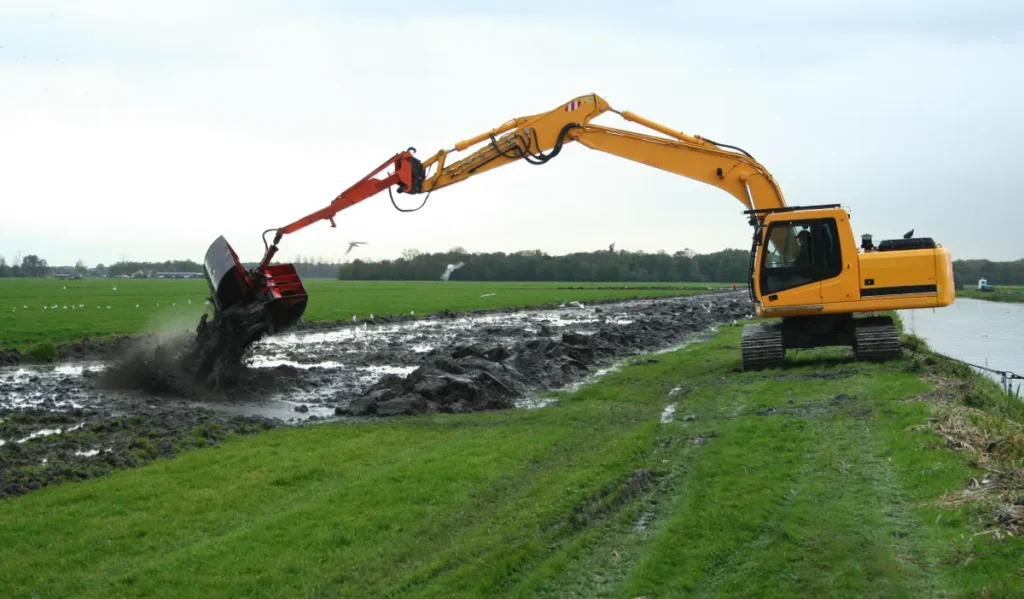
The dredging industry is rapidly evolving as global infrastructure projects, environmental regulations, and operational efficiency demands push manufacturers to innovate. Modern dredge manufacturing services are no longer limited to mechanical engineering—they now involve digital technologies, sustainable energy solutions, modularity, and advanced materials. Research and development (R&D) teams within dredging equipment manufacturers play a crucial role in turning these innovations into functional, field-ready solutions.
Key Innovation Trends Transforming the Industry
- Electric and Hybrid Dredges
- Transition from diesel-only power units to electric or hybrid propulsion systems to reduce emissions, noise, and fuel consumption.
- Ideal for urban waterways, ports with strict environmental laws, and closed industrial lagoons.
- AI-Based Monitoring and Predictive Maintenance
- Sensors monitor parameters like pump pressure, slurry density, bearing temperature, and vibration in real time.
- AI algorithms analyze data to predict wear, detect cavitation, and prevent breakdowns before they occur.
- Modular Dredge Platforms
- Modular pontoons and containerized systems allow easier transport, faster assembly, and scalability depending on project size.
- Configurable designs enable conversion from cutter suction to submersible pump or barge-mounted systems.
- 3D Printing and Advanced Manufacturing Techniques
- Rapid production of wear-resistant impellers, liners, and customized spare parts using high-strength alloy powders and composite materials.
- Reduces lead time and enables precision manufacturing of complex geometries.
- Smart Control and Automation Systems
- PLC, SCADA, RTK GPS, and sonar integration enable precise depth control, automated ladder positioning, and optimized dredging paths.
- Remote control rooms and autonomous dredging capabilities are increasingly being tested and deployed.
Role of R&D in Advancing Dredge Manufacturing
Behind every technological advancement is a dedicated R&D team focused on testing new materials, improving pump efficiency, and enhancing system reliability. Their functions include:
- Conducting CFD simulations and material research to develop high-efficiency, low-wear dredging components.
- Testing prototypes in hydraulic labs and simulated slurry environments.
- Collaborating with marine engineers, automation specialists, and environmental scientists for cross-disciplinary innovation.
- Developing sustainable solutions that meet global emission standards and reduce carbon footprints.
Innovation is not just an added advantage—it has become essential for dredging manufacturers looking to stay competitive and meet the demands of larger, deeper, and more environmentally sensitive projects. The next section examines the industries that rely most heavily on advanced dredge manufacturing services.
Final Thoughts: Building Long-Term Value with Reliable Dredge Manufacturing Partners
As industries demand greater efficiency, sustainability, and reliability, the importance of partnering with an experienced dredging manufacturer has never been higher. High-performance equipment, backed by expert engineering, training, and lifecycle support, ensures minimal downtime and long-term value for every project. At Gulf Coast Dredging, we understand these challenges firsthand and support our clients with end-to-end dredge manufacturing services tailored to real industrial demands. From equipment selection to on-site deployment and long-term maintenance, we work alongside you to ensure every dredging operation runs smoothly, safely, and profitably.


